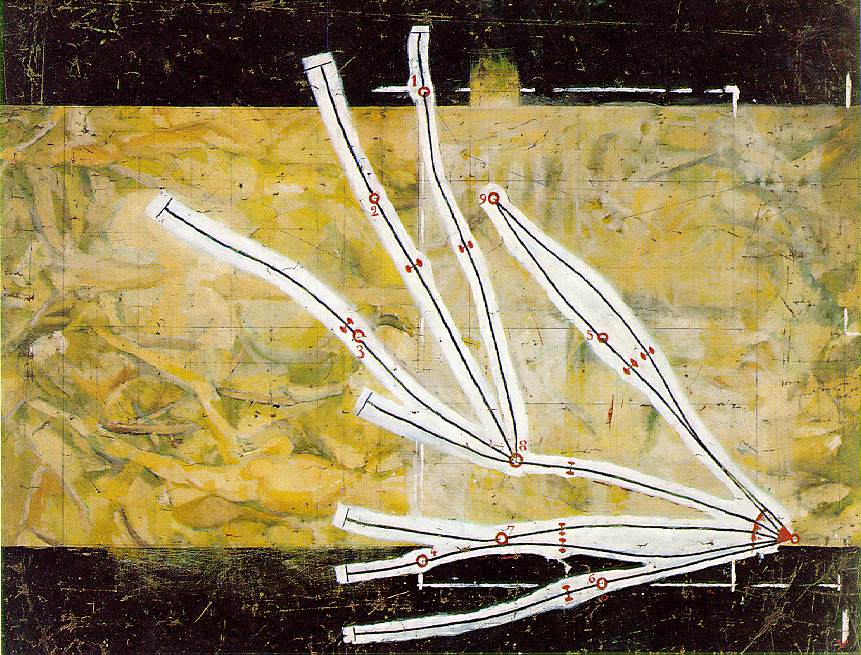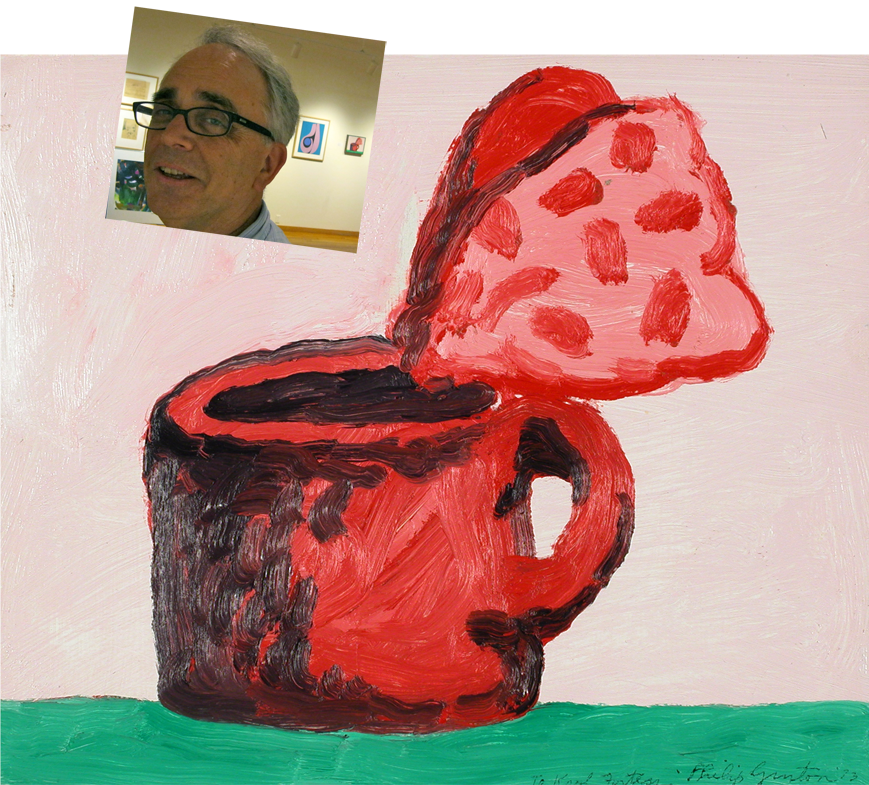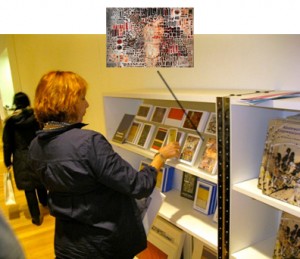The Angry Ironist
I noticed an unusually tall man bending down to scrutinize a drawing at the Basquiat show in the Brooklyn Museum. A mesomorph trailed him protectively. I soon realized this towering spectator was a famous basketball player, but I couldn’t place his name since I don’t follow sports. I took his picture anyway and approached his bodyguard and furtively asked who he was. The bodyguard made a face. “You don’t know?” he answered.
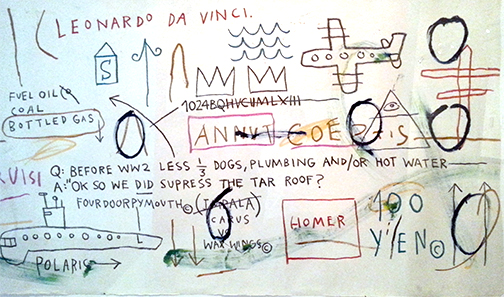
Untitled (Leonardo Da Vinci) 1982 Acrylic and oilstick on paper
An artist’s notebook is an incubator for work, a rehearsal space for ideas. ‘The Codex Arundel’ by Leonardo Da Vinci is the most famous example. Da Vinci’s name pops up in Jean-Michel Basquiat’s notebooks several times. Basquiat even has a drawing named after the Renaissance master. Whereas Da Vinci uses diagrams, sketches and texts for scientific inquiry, Basquiat uses them for irony. But Basquiat has different ambitions for his notebooks. He uses the pages from them as a background for his paintings. They form a platform where expressionistic painting acts as a counterpoint to the pseudo “scientific” content of the grid-like structures underneath. Interestingly, Basquiat uses sarcasm to point out the injustice of prejudice. Instead of a cool Duchampian indifference, irony sets the stage for a seething anger expressed with tortured faces. The only cure for post modernism is Romanticism and Basquiat delivers.
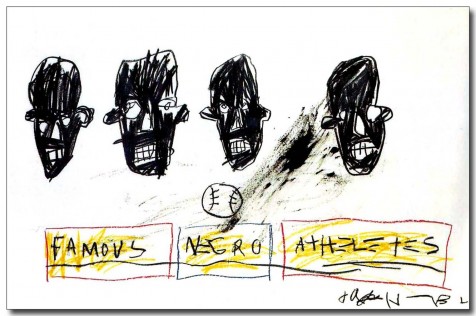
Famous Negro Athletes, 1981 Oilstick on paper
‘Famous Negro Athletes’ epitomizes Basquiat’s aesthetic. The athletes may be famous but from his drawings we can’t identify them – a racist observation that all black people look the same. The portraits have the emotional impact of a Giacometti. But instead of an existential visage of dread we’re confronted with bitter ‘portraits’ of people who suffer prejudice. Basquiat doesn’t use irony for smug cynicism, instead he uses it as an instrument for expression. How ironic it that? The torment of racism is best expressed when it is served up as a cold dish.This is what makes Basquiat rise above the rest of the artists of his generation. He eschews the bombastic, sentimental and faux suffering of his fellow 80s artists and their obsession with ‘bad’ painting. His vernacular is authentic. It is what he grew up with. It is graffiti. While the millionaire emotional fraudsters of his generation were painting ‘suffering’, Basquiat lived it.

I really wanted to know who that towering basketball player was at the show -- people were making such a big fuss about him. As soon as I got home I showed the photo I took of him to my son, a big basketball fan. “Wow! That’s Kevin Durant,” he exclaimed.
Thomas McManus is a writer, artist and professor at Fashion Institute of Technology in NYC.








